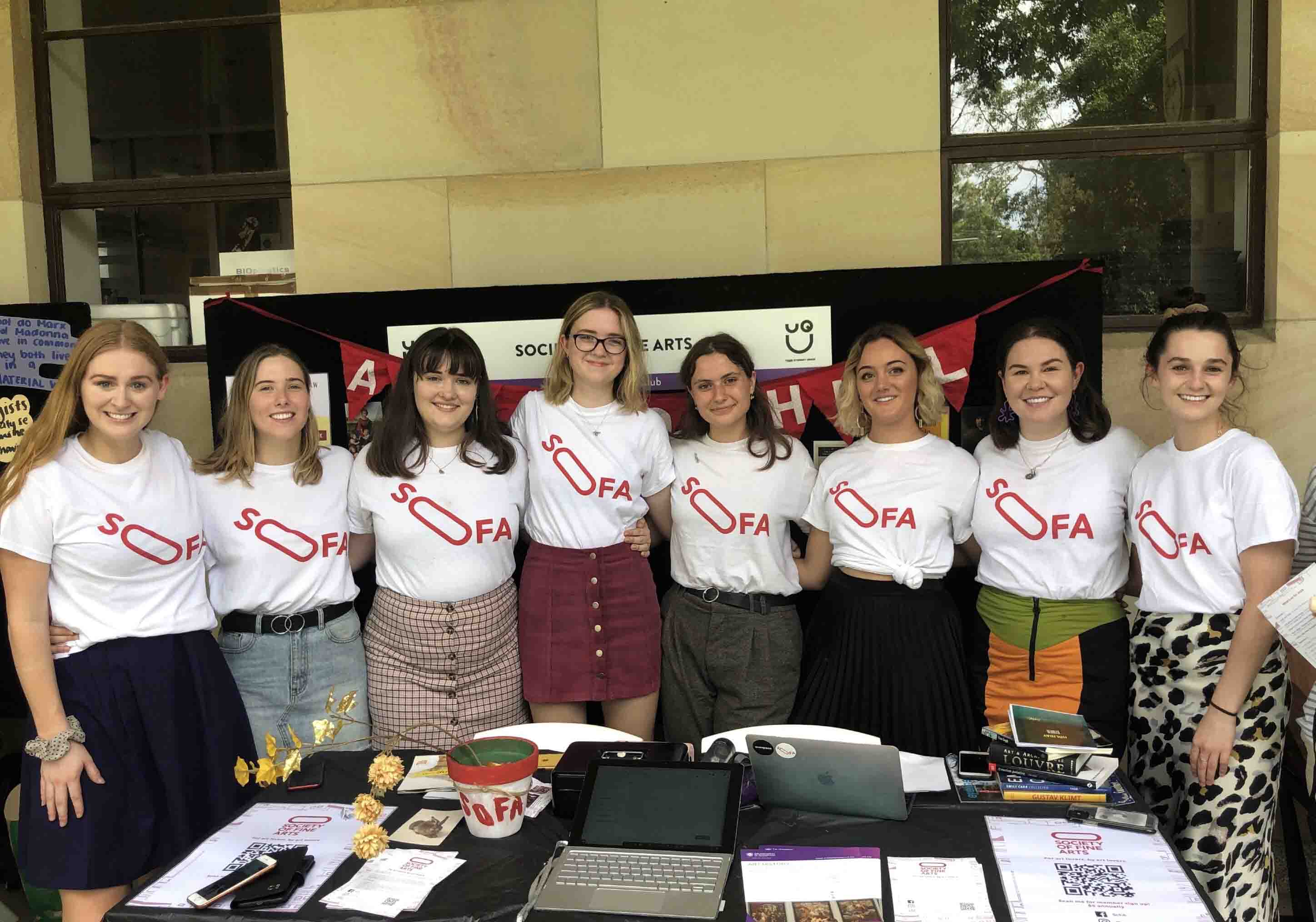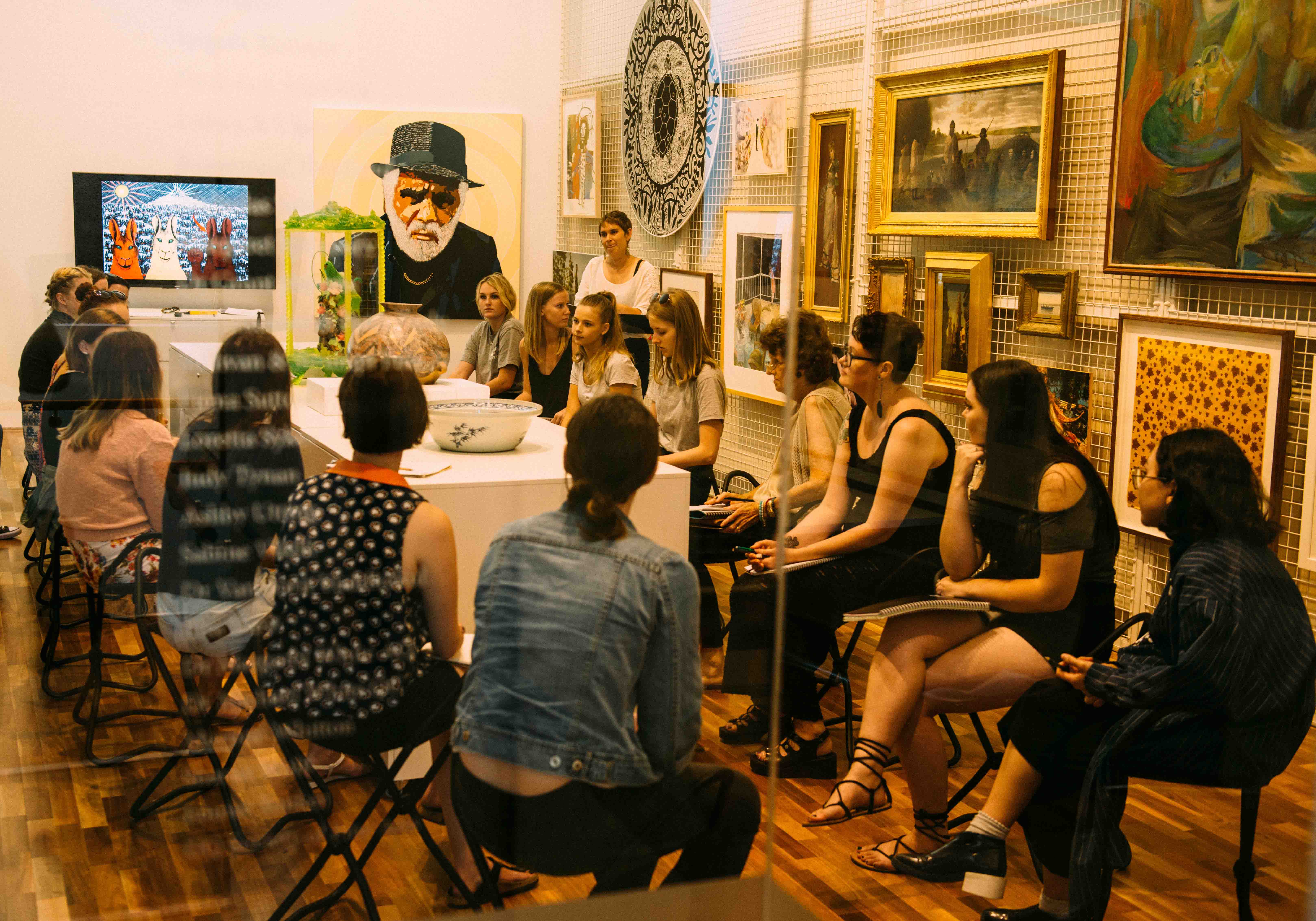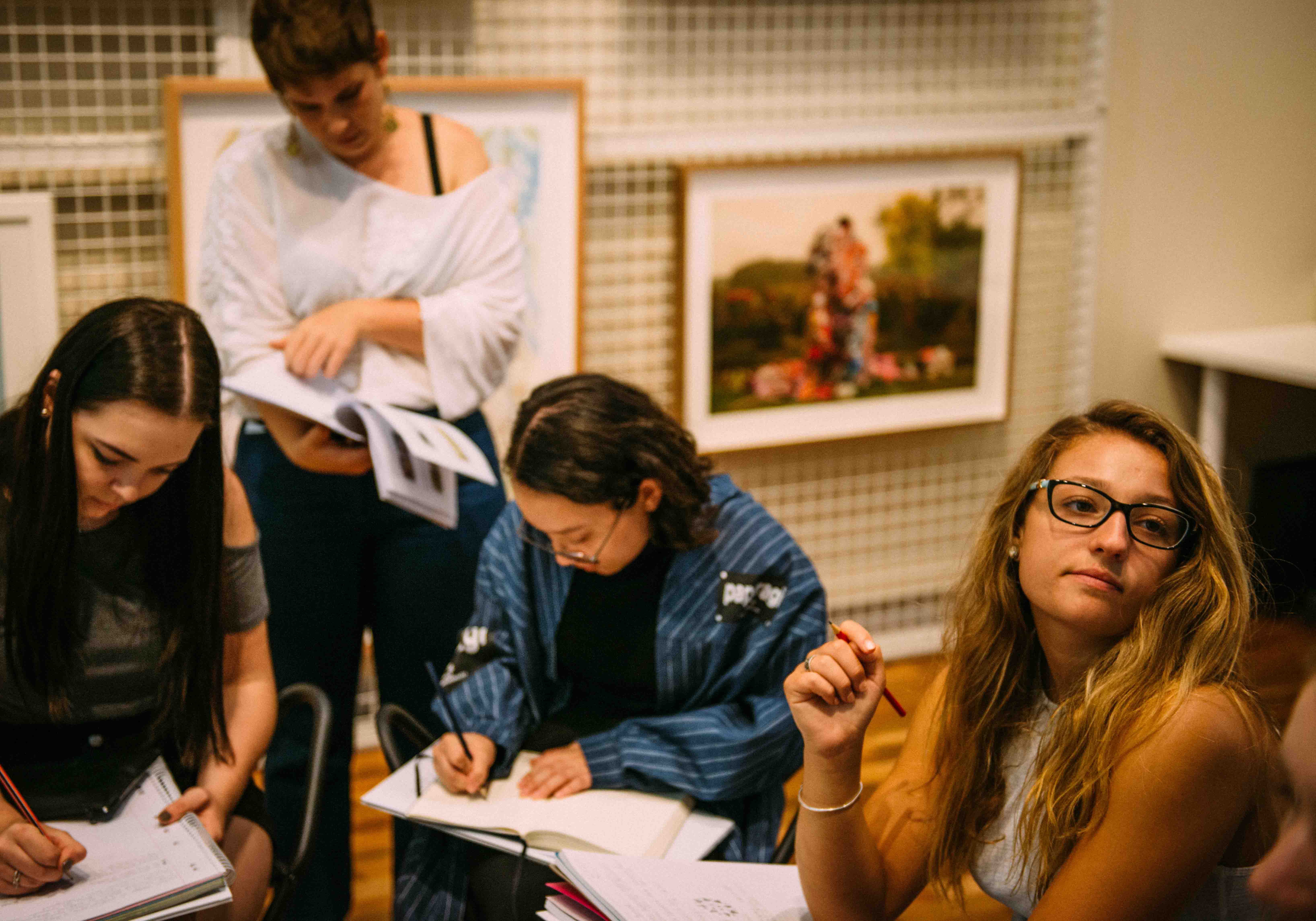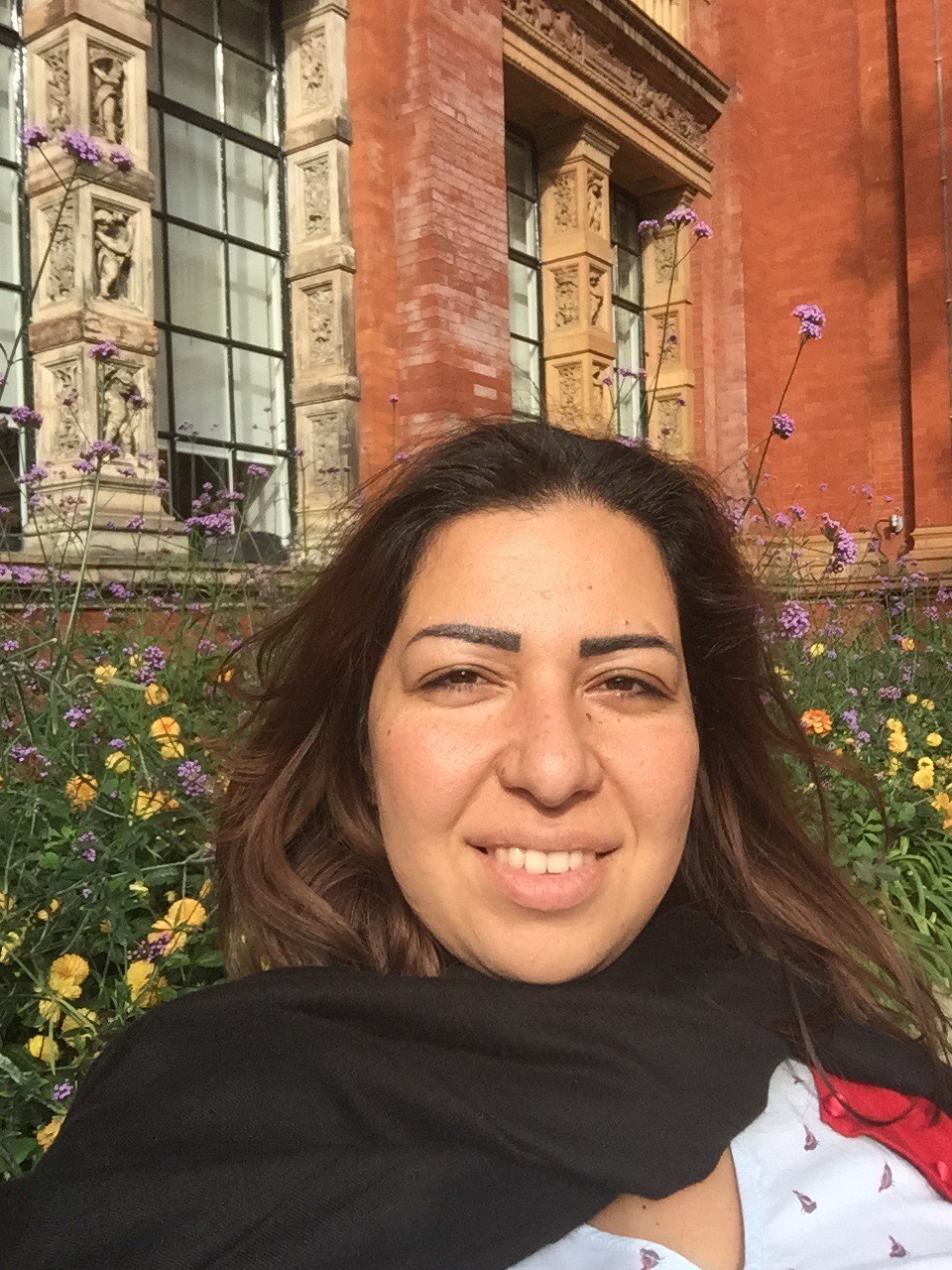Art History
From the early modern to the contemporary, studying Art History at UQ enables you to explore in detail the ongoing significance of art as a platform for shaping and interpreting the worlds in which we live.
Art History provides practical skills in visual literacy and communication, critical thinking, historical analysis, academic research and writing, exhibition design and curatorship, opening doors to a variety of employment pathways in the visual arts industries and cultural sector, both nationally and internationally.
Art History is available to study as a Single Major (16 units) or an Extended Major (24 Units), and features courses on Australian art, Renaissance and Baroque Art, Modernism, the history of photography, contemporary art and critical theory, Indigenous arts of the Australia Pacific region, methodologies of art history, and arts writing and curatorship.
Students further benefit from a range of curatorial internship and professional development opportunities across Australia and internationally, as well as placements with the University of Queensland Art Museum. UQ offers one of the few fieldwork courses on Indigenous Australian art available in Australia, an invaluable opportunity to work in a remote indigenous community. Students are also able to undertake an intensive three-week study abroad course in Venice, immersing themselves in Renaissance and Baroque art and architecture, and attending the Venice Biennale.
Study Options
Undergraduate
Bachelor of Arts – Art History
Postgraduate/Higher Degree Research
Students who complete the Art History major as part of an Arts degree may choose a path to Honours, MPhil or PhD in Art History, PhD in Art History by Exhibition, or an MA in Museum Studies.
Bachelor of Arts (Honours) in Art History
Doctor of Philosophy in Art History by Exhibition
Learning Pathways
We offer subjects ranging from introductory and foundational, to specialised field work and vocational subjects. As an art history student, you will be trained in core skills such as visual analysis, and gain a broad understanidng of visual culture from the early modern through to the contemporary. You will have the opportunity to study outside of the classroom with two field school subjects, and prepare for a career in the arts industry through two vocational subjects offered every year.
Below is a list of courses you may study in Art History. To view more details visit the program information page for the Bachelor of Arts or Diploma in Arts.
Level One
Looking at Art (ARTT1106)
Provides a broad introduction to the study of art history in first year. It is designed to equip you with a fundamental tool-kit for the study of visual arts and culture from around the world, including painting, sculpture, drawing, moving image, architecture, ceramics, and installation. The course looks at how art functions as collective expression of cultures, nations, and communities across history, and considers the study of art as an intellectual, social, cultural, psychological, emotional and political enterprise. The UQ Art Museum is a teaching clinic for this course, providing active-learning opportunities to study art works at close hand in the Collection Study Room and public galleries.
Art in the Modern World (ARTT1105)
An introductory survey course on modernity and its relationship to art, technology and mass culture. It covers the history of the European and American avant-garde from the mid-nineteenth century to the 1960s, with reference to photography, mechanical reproduction, cinema, advertising, consumerism, and life in the modern metropolis. The course includes discussion of Impressionism, Cubism, Surrealism, Dada and Constructivism.
Level Two
Australia Pacific Indigenous Arts (ARTT2103)
Focuses on the past and present art created by Indigenous peoples of Australia and the Pacific. It considers long-standing cultural traditions that shape art today along with cutting edge socio-political ideas that place these First Nation cultures at the forefront of what is at stake in contemporary global society.
Renaissance and Baroque Art (ARTT2010)
Explores paintings, sculptures and architecture by both iconic and lesser known artists in order to understand why Renaissance and Baroque art still matters to our understanding of the world in which we live. Themes include the reinterpretation of antiquity, the rise of individualism and secular humanism, new artistic approaches to light and colour, the revolution of printmaking, patronage, theatricality, and the cult of the artist. Emphasis is on developing visual literacy, critical thinking, and confidence in writing about art.
Australian Art (ARTT2127)
A broad-based assessment of Australian art from the colonial period to the 1970s. Particular attention is paid to landscape painting, national themes, and the development of Australian Modernism.
Level Three
Art in A Global World (ARTT3105)
Surveys international contemporary art from around the world. You will be introduced to a variety of different approaches to the writing of contemporary art histories, and become familiar with some of the major artists and theoretical frameworks driving contemporary artistic production and reception today. The course is designed to develop key skills in visual analysis, critical thinking, independent research, and academic writing. It includes site visits to galleries and museums in Brisbane and guest lectures. Seminars take the form of a lecture followed by a class discussion.
Readings in Art History (ARTT3100)
Engages in detail with the varying methodological approaches of some of the world’s most renowned art historians. Commencing with an overview of the origins of art history as a discipline during the Renaissance, the course proceeds chronologically, concluding with a range of present day art historical methods. Focusing on primary texts by seminal writers, it includes seminars on aesthetics, iconography, style, feminism, semiotics, structuralism, post-structuralism, and globalism.
Photography from the Daguerrotype to Instagram (ARTT3140)
Surveys the history and theory of photography from the 19th century to the present. It considers several key critical debates on the role of photography as both an art form and a social medium of visual communication. Particular emphasis is placed on the writings of critics, photographers, scientists, media and art historians on the medium. Students will consider seminal controversial debates about the ways in which photography has been historicized and conceptualized. Is photography an art or is it media? Is it evidence or fiction? Is photography an empowering medium? How can photography create change?
Fieldwork and Vocational (see separate sections on website)
Postgraduate work
Your undergraduate degree in art history is a pathway to several postgraduate options: honours, the MPhil, and the PhD. You can also choose to train as a curator through our PhD in art history by exhibition https://graduate-school.uq.edu.au/phd-art-history-exhibition
Fieldwork (Australia and Abroad)
Indigenous Art and Culture Field School (ARTT2200) involves a week-long class residency at a remote community Indigenous art centre where students are involved in art and culture workshops that cover topics where art relates to society, language, and the environment as well as skills required for an arts worker in remote Australian art centres.

Art and Architecture in Venice (ARTT2116) is an immersive and intensive on-site study experience for students of art history and is especially beneficial those who are preparing for an international career in the arts industry. Over a two week period, Venice becomes both the classroom and subject of enquiry, with lectures and research taking place within the galleries, museums, palaces, and neighbourhoods of the city, as well as the Venice Biennale, the most important exhibition of international contemporary art. The current learning outcomes include original field notebooks and on-site research projects. Through direct engagement with historical visual culture and architecture and a globally significant art fair, students develop research skills and tools of communication that are foundational for future employees in the arts. The course directly enables and fosters an educational experience abroad, immersion in a new cultural context, and contacts with networks of arts practitioners. Venice is especially appropriate for these activities, given the quality, quantity and accessibility of historical visual culture and arts institutions in the city, as much as the opportunity to attend and benefit from the internationally significant Venice Biennale.

The course supports international student mobility and is a core component of the art history program at UQ. Because the duration of the course is spent in Venice, Italy, students benefit from living, studying and researching in an international context. Through participation in group activities, the development of visual analysis skills, and emphasis on presenting original findings, this educational experience has a marked impact beyond the course duration. The skills enhanced - critical and direct observation, effective oral and written communication, independent thinking and living – are essential to arts related practices, thus lending the course significant vocational appeal.
The Student Experience
Join a vibrant student community
The UQ Society of Fine Arts (SoFA) is an inclusive and exciting collective for art lovers at the University of Queensland. Endeavouring to contribute to UQ’s artistic discourse through fun events, collective gallery visits and community, SoFA is a one stop shop for anyone who is curious or passionate about art.
Mission:
- Contribute to UQ on-campus culture by providing an inclusive society for people interested in art;
- Connect and foster links between students and the world of art history and fine arts;
- Facilitate learning and promote excellence for the UQ Art History community.

Testimonials
Elena Dias-Jayasinha
 “The UQ Art History program has provided me with the theoretical knowledge and practical skills to begin a career in the arts. I have gained a strong foundation in the history of art, taking courses that range from Renaissance Art to Studies in Photography, from Australia Pacific Indigenous Arts to Asian Contemporary Art. The staff are supportive and have helped guide me through my degree. I could not recommend the Art History program enough.”
“The UQ Art History program has provided me with the theoretical knowledge and practical skills to begin a career in the arts. I have gained a strong foundation in the history of art, taking courses that range from Renaissance Art to Studies in Photography, from Australia Pacific Indigenous Arts to Asian Contemporary Art. The staff are supportive and have helped guide me through my degree. I could not recommend the Art History program enough.”
Internships
When you study art history at UQ you will have the opportunity to go beyond the classroom and gain hands on experience. Students who take ARTT3200 (Art Internships and Independent Research) have taken up internships in New York, Hawaii, Venice, and all across Australia. Through ARTT3117 (Visual Arts Curating and Writing) you can go behind the scenes at the UQ Art Museum and learn about curatorial practice and a range of applicable gallery and museum skills.
ARTT3117 – Visual Arts Curating and Writing introduces students to both the theoretical principles and practical approaches to art curatorship in the twenty-first century. It provides an overview of histories and contemporary debates in the field of exhibition-making, both in Australia and internationally. This course takes place on site in the UQ Art Museum.


ARTT3200 – Art Internships and Independent Research is a third year course that offers students the opportunity to undertake an internship with a public art institution either within Australia or internationally, or complete a major independent research project.
UQ Art History students have undertaken placements and internships at the following institutions:
| Institute of Modern Art |
| National Gallery of Victoria |
| Griffith Artworks |
| Media Art Asia Pacific |
| Caloundra Regional Art Gallery |
| Logan Art Gallery |
| Bula'bula Arts Aboriginal Corp |
| Milani Gallery |
| The Walls Contemporary Art |
| Eyeline Publishing Limited |
| QAGOMA |
| Artfully |
| UQ Art Museum |
| Guggenheim – New York |
| The Peggy Guggenheim Museum – Venice |
Scholarships
Paula and Tony Kinnane Art History Scholarship
The Paula and Tony Kinnane Art History Scholarship was established to support students undertaking undergraduate studies in art history.
The scholarship was established in 2017 and is maintained by the income of a perpetual endowment fund from a bequest to The University of Queensland under the will of Paula Ruth Kinnane, who graduated from The University of Queensland in 1991 with a Bachelor of Arts degree.
The scholarship recognises Paula and Tony Kinnane, who were lifetime lovers of art, art galleries, and collecting art for their own pleasure.
Elena Dias-Jayasinha was the 2020 recipient of this scholarship.
“Not only will it greatly support my studies at UQ, but interning at the UQ Art Museum will also be invaluable to my learning and future career."
Apply here: https://scholarships.uq.edu.au/scholarship/paula-and-tony-kinnane-art-history-scholarship
Teaching Staff
Overview
The Art History staff at UQ have a broad range of teaching and research expertise, and collaborate regularly with a variety of academic and industry partners, fostering networks across the fields of arts publishing, curatorship and museology. They have curated major exhibitions in partnership with national and international museums and galleries, and are also frequent contributors to national and international media.
Art History Lectures
Mavis Ngallametta’s Emotional Ecology
Associate Professor Sally Butler recently gave a public lecture for the GOMA Gallery Of Modern Art which considers how Mavis Ngallametta's unique paintings of her Indigenous concept of Country advance global ideas about emotional ecology.
You can now view this lecture online:
Robert Smithson: Time Crystals - Who was Robert Smithson?
Dr Amelia Barikin talks about Robert Smithson: Time Crystals which is the first exhibition in Australia dedicated to the work of American artist Robert Smithson (1938-73). Best known for his radical land art of the 1960s and early 1970s, Smithson is now widely recognised as one of the most influential artists of the twentieth century. Inspired by ideas of crystalline geometry and non-biological time, he redefined abstraction and challenged art history, declaring that ‘Nature gives way to the incalculable cycles of non duration.’
Camille Serisier artist talk
Dr Paolo Magagnoli talks with Camille Serisier, who creates elaborate narratives and fantastical scenes using props and costumes as a way to deconstruct forms of Australian culture / Auslan interpreted.
Staff exhibitions and exhibition catalogues
Exhibitions and exhibition catalogues are major contributions to our understanding of art and visual culture. Many of the art historians at UQ are also practicing curators, and believe in the broad public engagement that exhibitions enable. Here is a sample of their work.
Careers in Art
Art History is extremely beneficial for those seeking professional careers in both the public and private sectors of the global arts industry. The arts industry is an area of growth, and UQ has an exceptional history of placing graduates in employment positions in private galleries and state art institutions in Queensland, nationally and internationally. Popular positions for art history graduates include: curators, arts managers, arts festival directors, arts editors, arts journalists and critics, public program managers, commercial arts dealers, collection managers, museum staff, and arts administrators.
 Dina Ibrahim
Dina Ibrahim
Dina is a UQ Art History (Honours) graduate currently working at the Victoria and Albert Museum in London as an Exhibitions Manager. In this role, Dina manages a wide variety of exhibitions from Pink Floyd: Their Mortal Remains to Food: Bigger than the Plate.
Previously, she has worked as Exhibitions Project Manager at Royal Museums Greenwich in London where she was responsible for delivering two new permanent galleries as part of a multimillion capital project and before that as an Assistant Curator at the Hayward Gallery, London where she managed the Carsten Holler: Decision Exhibition. Before coming to London she worked in Dubai as an Associate Director at The Third Line Gallery where she managed exhibitions as well as artists and sales. Dina also had an internship at the Guggenheim in New York as well as work experiences at QAG/GOMA and IMA in Brisbane.
You can read her full story here.
"It all really started for me in Associate Professor Sally Butler’s Looking at Art class. It was a turning point for me and led to a life long career. An Art History degree at UQ helped me in two ways. Firstly, I was learning about the history of art, which I found immensely enjoyable. Secondly, and perhaps more importantly for me, there was practical advice on what to do with this knowledge, how to navigate the art world and what job opportunities are out there. My teacher Dr Andrea Bubenik was the one who encouraged me to apply for the internship at the Guggenheim in New York, which opened a lot of doors. Without her support, and many others in the UQ Art History department, I don’t believe I would have gone as far, both literally and metaphorically!"
